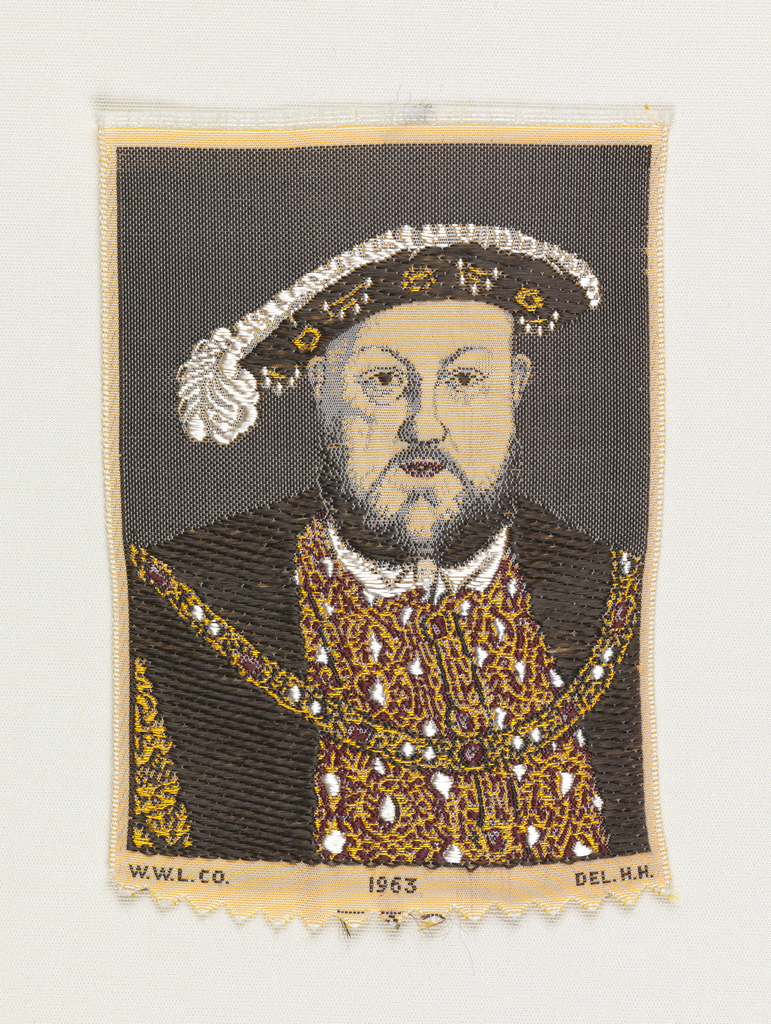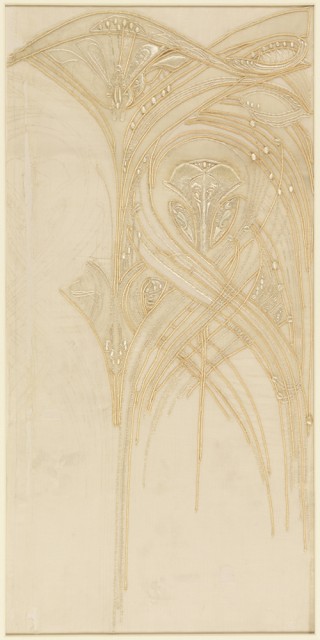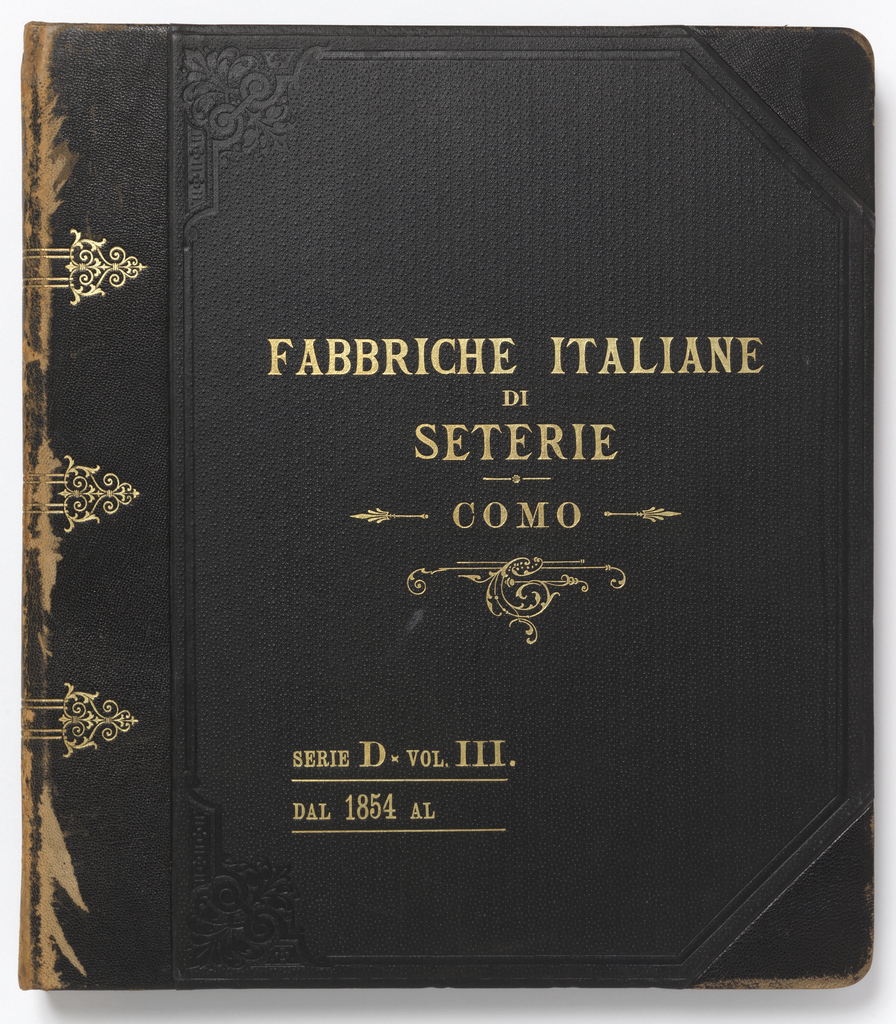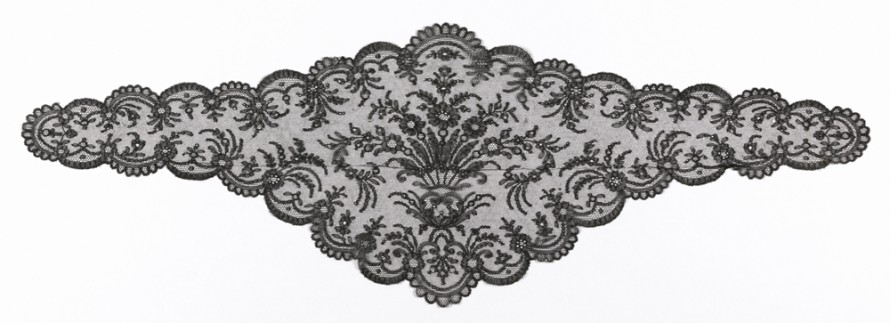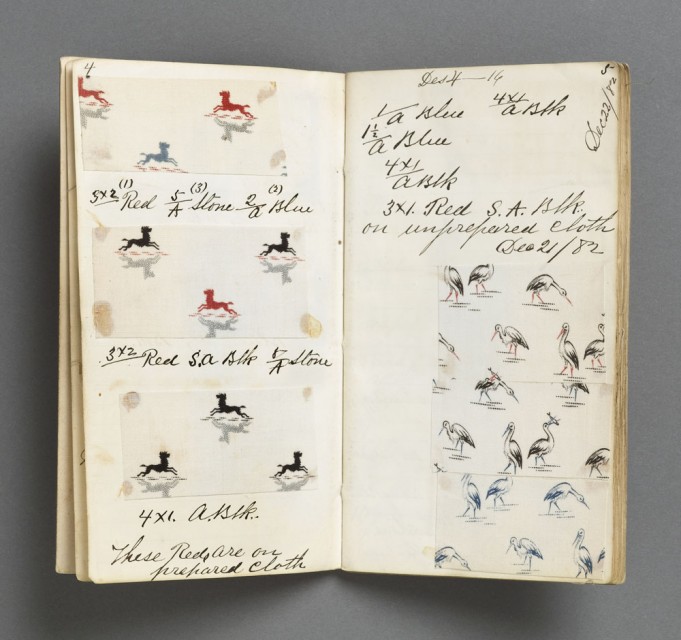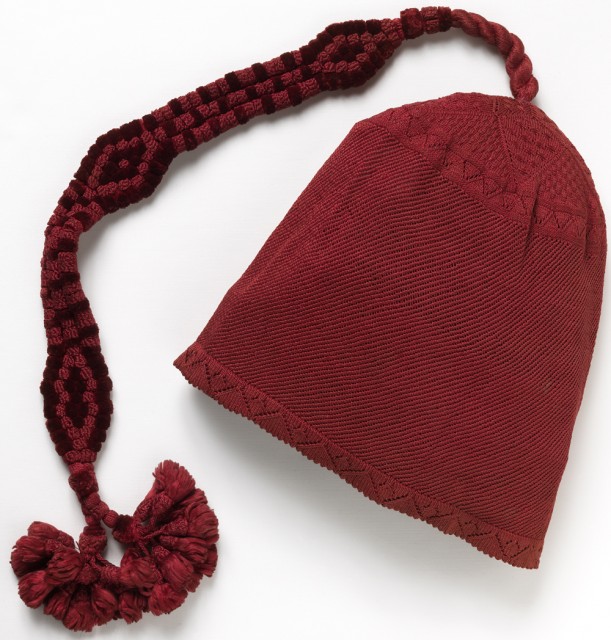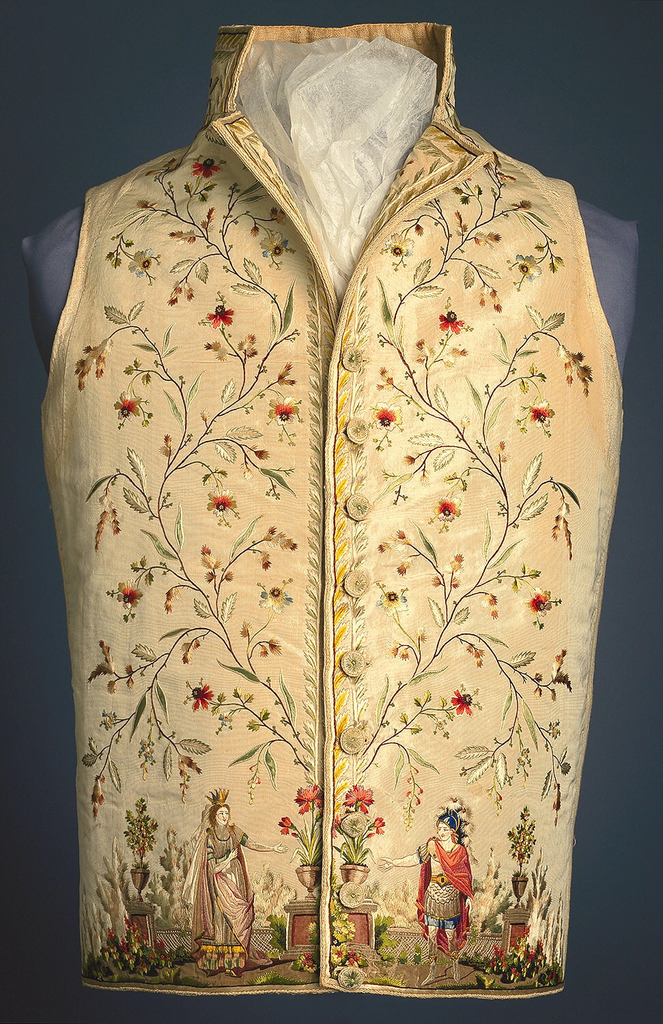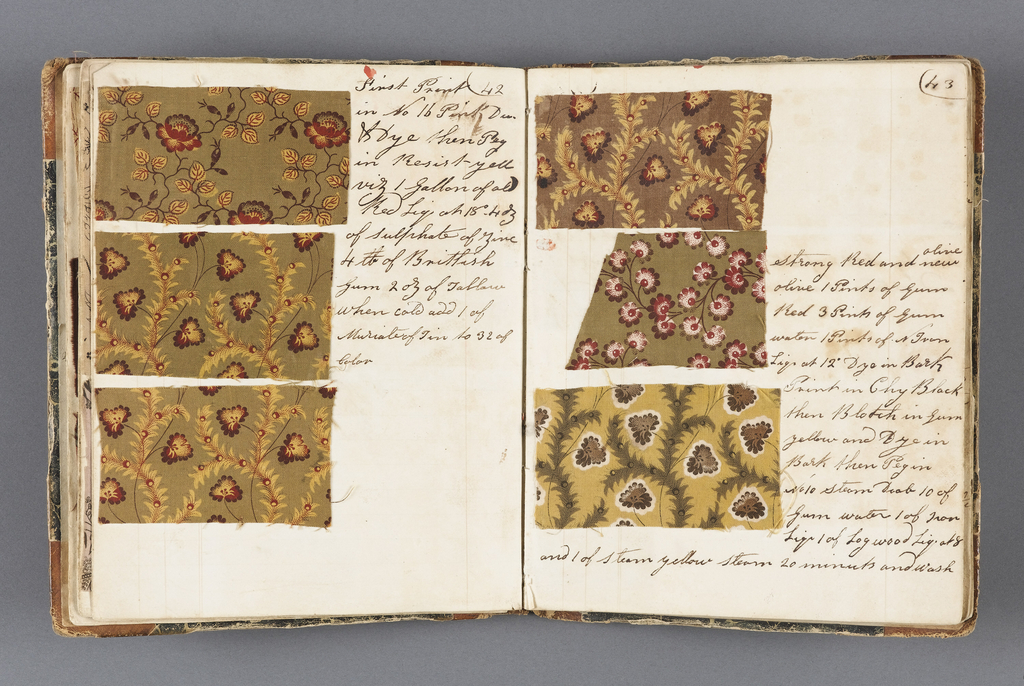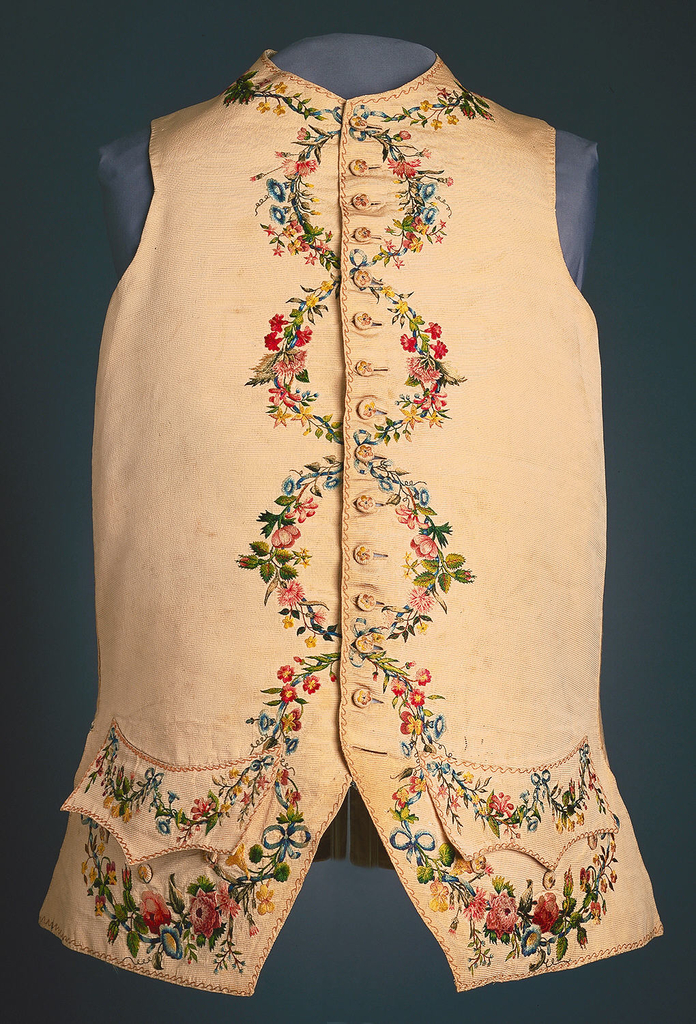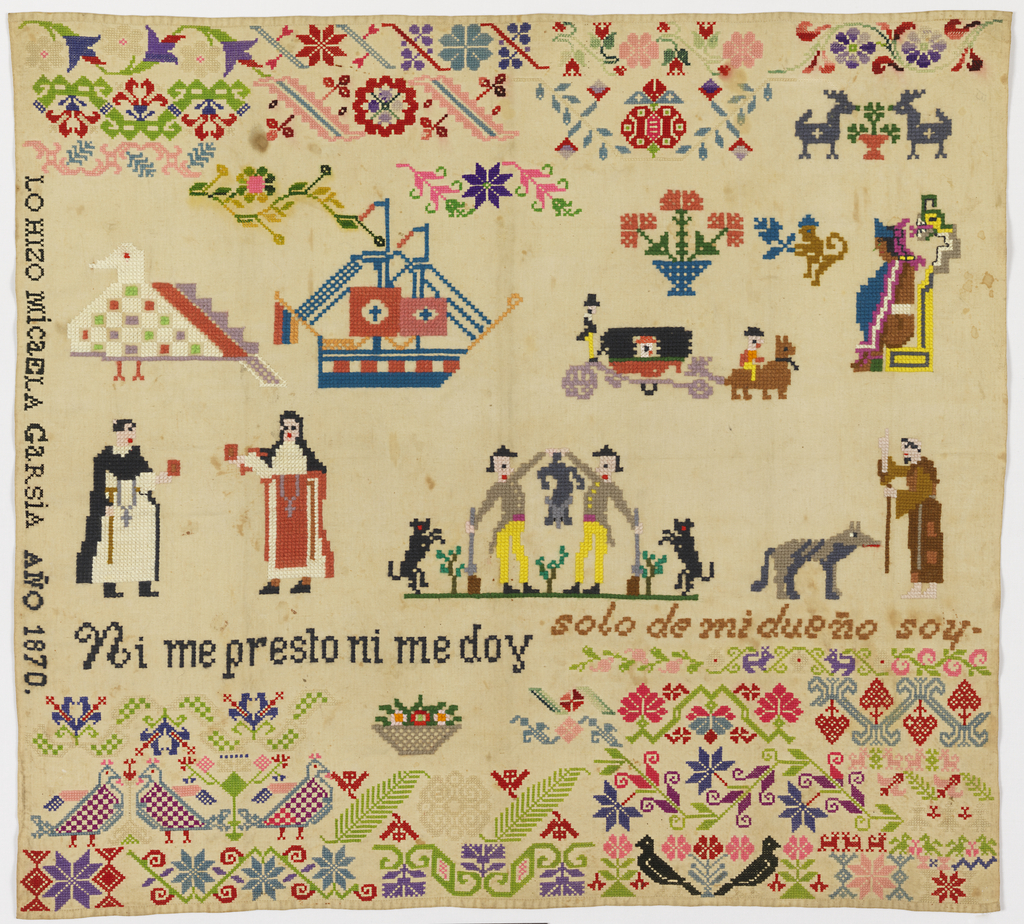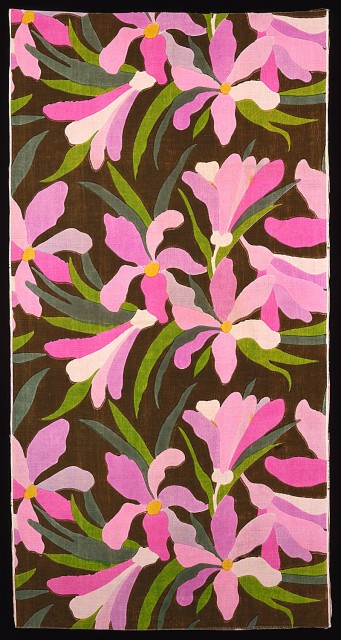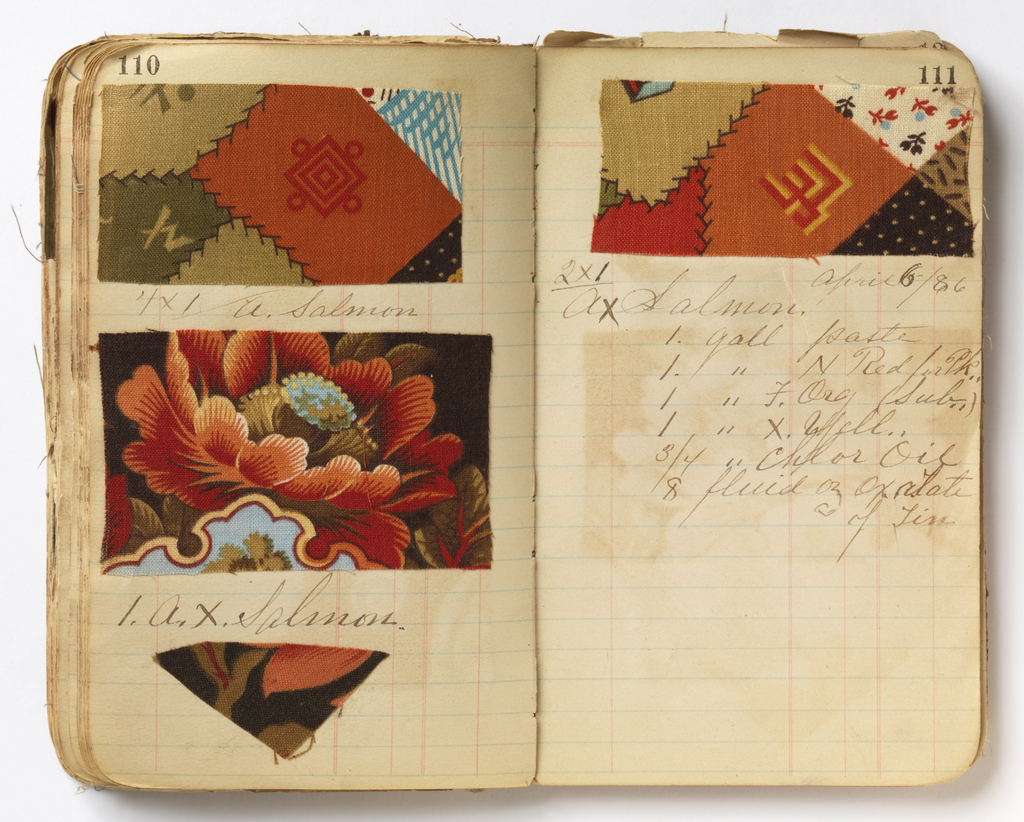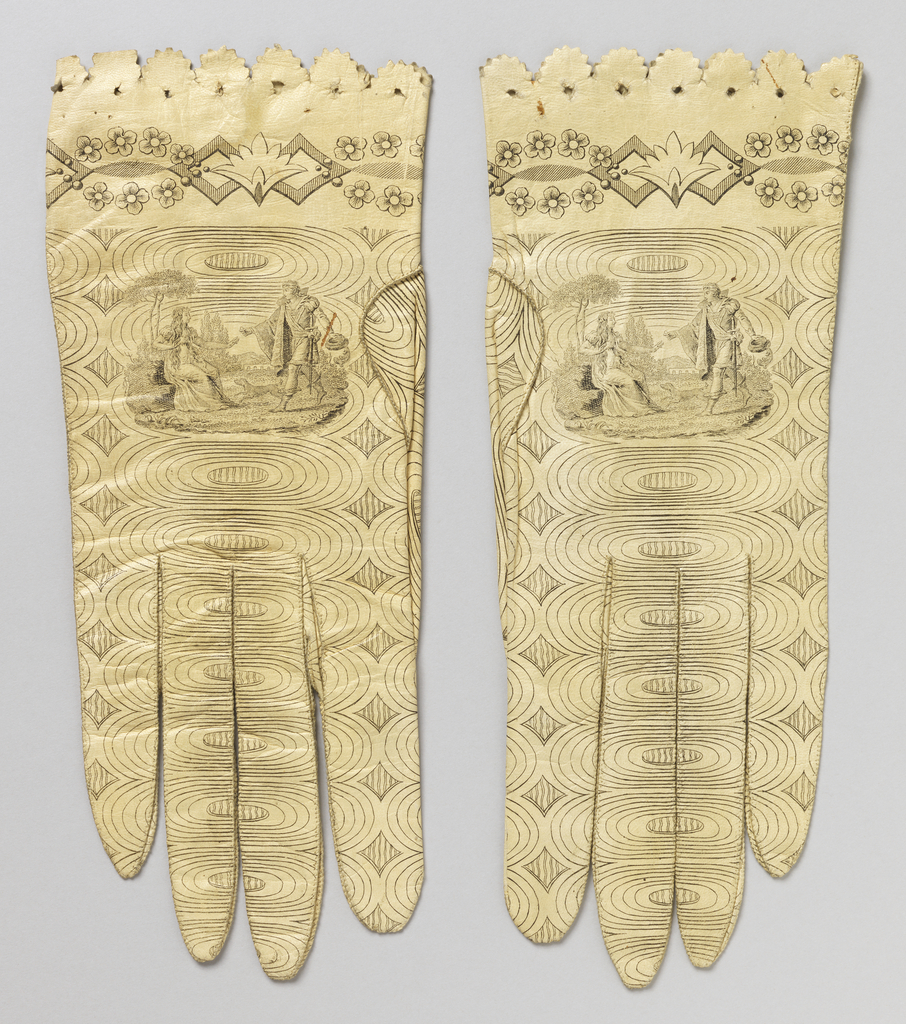This sample book, dating from the late nineteenth-century, contains very fine examples of woven silks from Como, Italy. Since the sixteenth century, Como has been a center for luxurious Italian silks. Lake Como and nearby Alpine streams give the region plenty of water to support sericulture. Close to Lake Como is the Po River Valley where mulberry bushes, the food of silkworms, were widely cultivated.
For centuries, European rules of etiquette allowed a woman to receive gloves as a gift from men other than her husband. The practice was so widespread that novelty became an important consideration for the gift-giver when making his selection. Light-colored printed gloves enjoyed popularity with women in early 19th-century Europe, but this pair’s eye-catching design is particularly noteworthy for its unusual optic effect.
